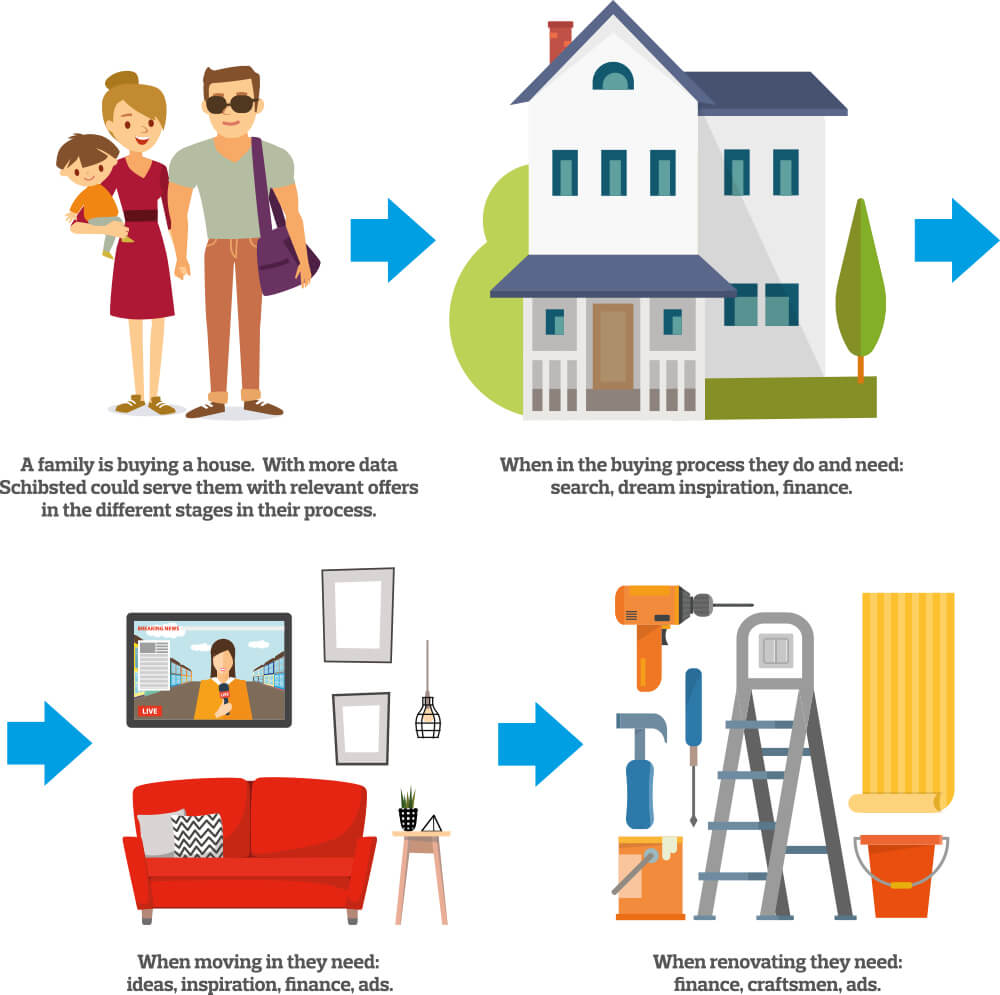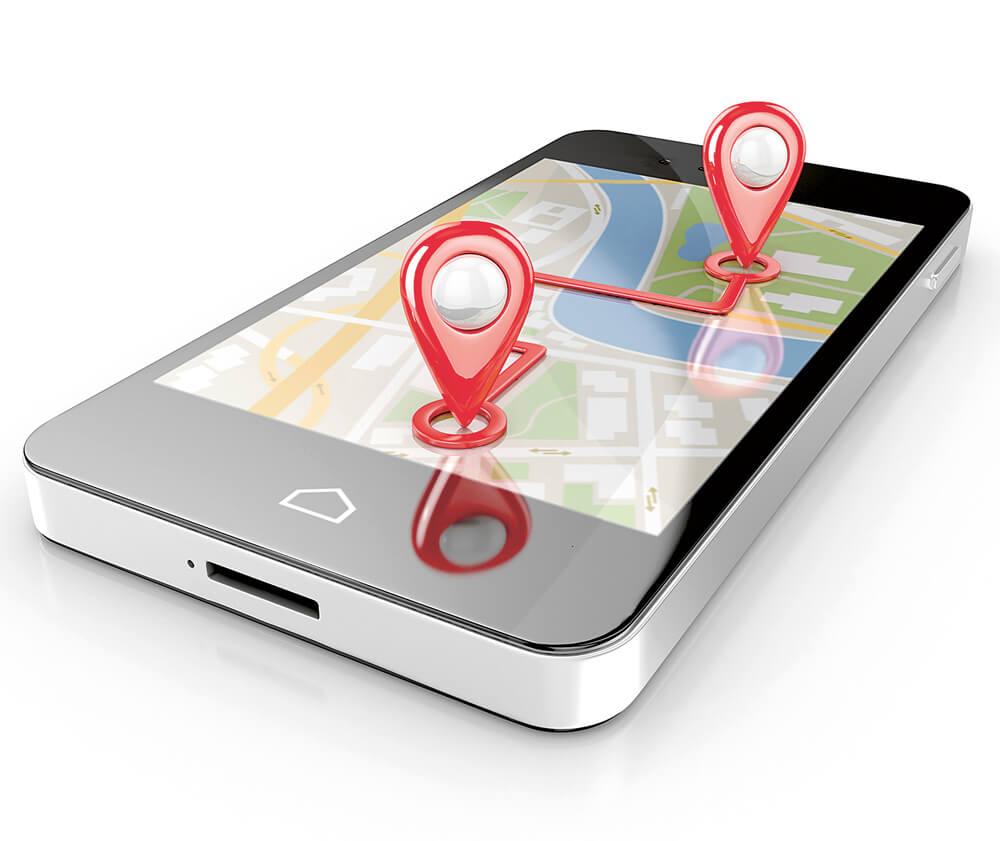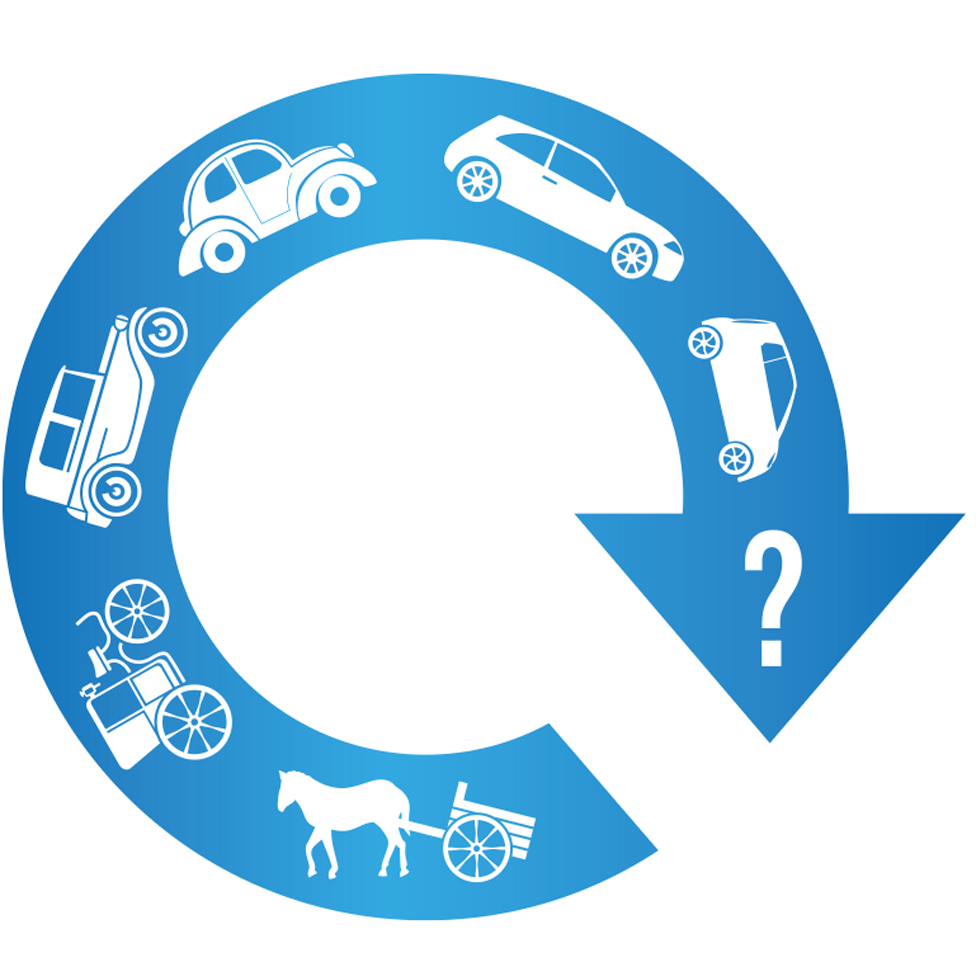The data vision
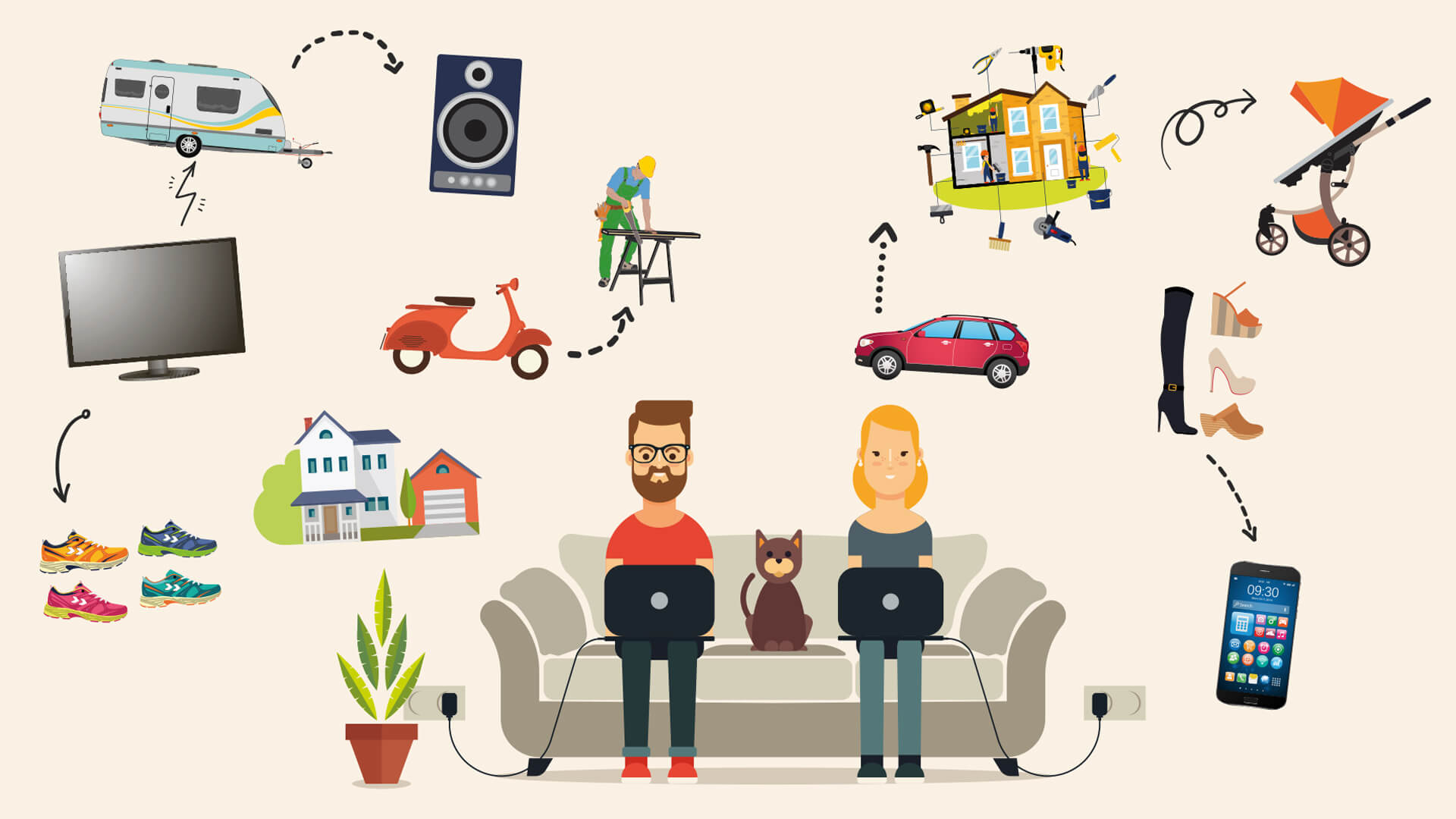
The data vision
When technology is fundamentally changing our world, one thing is sure: Only those who are bold enough to question the status quo will survive. Ovidiu Solomonov, dives into what the future might bring for digital marketplaces.
The amount of data collected every year increases exponentially – in 2015 we collected more data than in the history of mankind up to 2014. The ability to store and process this data increases exponentially – Moore’s law is (still) at work driving ever faster, smaller and cheaper hardware. Algorithms now exist that can crunch these vast amounts of data and learn on their own how to optimize for specific targets.
Step by step
This is why we are bombarded with news about smart cars, humanoid robots, and artificial intelligence. While it’s impossible to predict exactly what the future holds, one thing we know: the future will be discovered, step by step, by those who have the courage to experiment and disrupt the status quo.
Let’s think about what the future might bring for digital marketplaces where millions of people buy and sell goods every day. It’s not difficult to see how an image recognition algorithm could simplify ad insertion on marketplaces, but are there deeper implications on the very structure for these sites? Could this be not just a change of degree, but a change in nature?
Historically, marketplaces have been predicated on liquidity: you bring all buyers and sellers to one place and get them to trade with one another. The path to building such liquidity always starts with the supply side: you attract the sellers in a given segment, bring them buyers, attract more sellers interested in those buyers and yet more buyers interested in what the new sellers bring. This virtuous cycle makes perfect sense as sellers have an economic incentive that motivates them to incur the “cost” of listing their content in exchange for the promise of potential prospective buyers.
This is now changing with people increasingly spending their lives online and having more content than ever competing for their attention. They are no longer willing to invest the effort to search through generic content – they are increasingly expecting full personalization – what I need, when I need it.
Matching goods to people
Let’s try a mental experiment on what this exponential growth of data and processing power can mean for digital marketplaces: imagine a world where all goods are identified and their ownership is known, where people’s preferences, needs and desires can be predicted and where algorithms exist that can optimally match existing goods to people’s needs.
In such a world we would all be passive sellers: you would receive a message telling you that you might want to sell your current bike to someone else and buy the new one that you have always dreamt of in exchange of a small difference; swipe right and within 24 hours you have a new bike.
In such a world even the notion of ownership will change – as long as you can sell any goods at any given time for the “right” price, you are de facto “leasing” it for as long as you need it.
Is this a viable future? If, when the Iphone was launched in 2007, someone told you that within ten years, with one swipe, you could summon a car that drives itself to take you from point A to point B, would you have believed it? This is the power of exponential growth.
Let’s try to make a testable prediction: Within the next ten years marketplaces will have morphed from places where an “infinite” number of fungible buyers search through unique content, to algorithms/bots that push an “infinite” number of goods to the right person, at the right time. Demand side personalization will replace supply side scarcity.
Big is bad
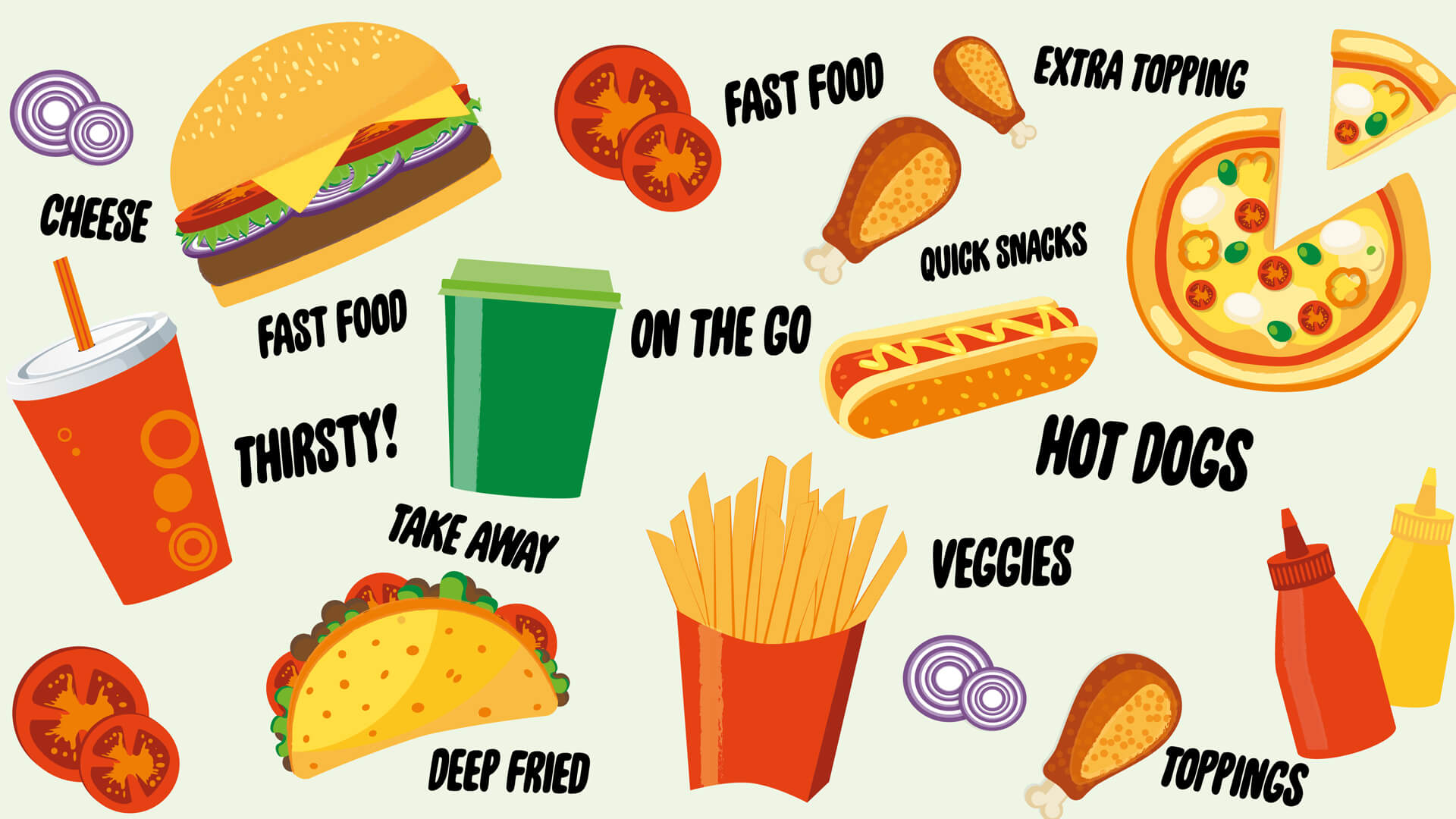
Big is bad
Maybe they look as healthy as ever, but the food giants are in serious trouble. They are threatened by a new generation of consumers fed up with standardized products of uncertain origin. Mats-Eric Nilsson, food writer and former managing editor at Svenska Dagbladet, tells us how Big has become Bad.
Ten years ago, when I was part of the editorial management team at Svenska Dagbladet, participating in various development projects, we regarded the largest British food chain Tesco as a shining and inspiring example, well worth a study visit to London. Here we had a large and extremely successful company, clever at understanding its customers, “consumer insight”, and also able to adjust to every shift in their demand.
Today this food chain is struggling with dwindling revenues, losing 6.4 billion pounds in 2014 forcing the company to close 43 non-profitable stores and their own HQ.
A change in mind-set
Even the largest supermarket chain, the American giant Wal-mart, priding itself on low prices, is struggling with serious problems, stagnating sales and shrinking market shares in the food segment. For over a decade the company has been at the bottom of the list for consumers’ satisfaction and must, according to the expertise, abandon its extreme focus on prices and change the entire mind´set among the staff. Similar problems exist in the whole food business and are also affecting the traditional purveyors to the food chains.
In May 2015 the business magazine Fortune ran an in-depth article under the headline “The War Against Big Food” which is the American over-all term for the food giants. The feature started like this:
“Try this simple test. Say the following out loud: Artificial colors and flavors. Pesticides. Preservatives. High-fructose corn syrup. Growth hormones. Antibiotics … If any one of these terms raised a hair on the back of your neck, left a sour taste in your mouth, or made your lips purse with disdain, you are part of Big Food’s multibillion-dollar problem. In fact, you may even belong to a growing consumer class that has some of the world’s biggest and best-known companies scrambling to change their businesses.”
Producers are aware of the problem
Such drastic statements may seem grossly exaggerated in order to create an interesting opening for the piece, but the American producers of packed food, who held their yearly conference three months earlier, would hardly agree. “Big” has come to equal “Bad”, lamented a representative of the giant Conagra that has lots of well-known brands. Another speaker feared that the growing skepticism towards the food giants might make the customers turn their backs on them for good. Denise Morrison, CEO of Campbell Soups said: “We understand that increasing numbers of consumers are seeking authentic, genuine food experiences, and we know that they are skeptical of the ability of large, long-established food companies to deliver them.”
Since 2009 the 25 largest food companies in the US have lost market shares to the tune of 18 billion dollars.
“I would think of them as melting icebergs”, one analyst said at the trade conference. “Every year they become a little less relevant.”
Still, the problems of today are nothing compared to those waiting round the corner. The latest generation of consumers, the millennials, have already put fear into the business. They are the age group born 1989-2000, thus being between 16 and 27 years old today. Pretty soon they will be the most important of the consumers’ groups and all those reports saying that these young customers are having, and will have, much stronger opinions and demands than their parents had, worry the food industry.
Suddenly they insist on being told where the food comes from and how it is produced. They like locally and traditionally produced food and try to avoid processed food and GMO. And since we are now talking of the largest generation in history – in the US they are 80 million people – the companies must adjust to the prevailing wind that is expected to blow for many years.
Smaller manufacturers doing well
The giant Kraft Foods, with lots of well-known brands, is doing away with artificial coloring and preservatives, as is Kellogg’s and many other producers. The world’s largest fast food chain Subway, which now after years of strong growth is facing serious difficulties, is promising to sort out their additives, while McDonald’s – which is not going well either – have stopped using chickens that have been treated with antibiotics.
While the faltering giants apply various defensive measures the smaller manufacturers of organic products, and other products that are perceived as more genuine and natural, are doing well. Earlier their items were sold in special shops for the very food conscientious people, but now they are also on the shelves of the big supermarket chains, including the low price ones.
One example of many is the now fast-growing family business Amy’s Kitchen which was founded in 1987 by Rachel and Andy Berliner and is named after their then newly born daughter. Their frozen vegetarian cooked meals – from burritos and pizza to Japanese teriyaki and Indian palak paneer – are prepared in traditional ways with basic ingredients of fresh organic vegetables. The onions are chopped by hand every morning and instead of buying ready-made tofu they are making it themselves in the traditional manner. Today the company employs 2.000 people producing 700.000 meals a day and in 2015, symbolically enough, they took over a factory building from Heinz, that can no longer find sufficient demand for their well-known frozen meals.
The big chains are feeling the competition breathing down their necks. Unless they make some radical changes they will, as American analysts predict, be hopelessly over-run in the not too distant future.
In this situation some of them have begun to play down their own brand into which they have invested so much. Seven years ago Starbuck’s opened some cafés in their hometown of Seattle without even the smallest of chain logos. In order to be inspired by genuinely personal places the chain’s representatives paid frequent visits to some of the city’s independent cafés. From one bar the entire interior decoration was copied straight off, including the fittings of the industrial lamps and the wooden chairs.
And in Sydney a couple of years ago McDonald’s discreetly transformed one of its “McCafés” into an anonymous café with the bland name The Corner. These giants, who a couple of years ago were boasting about every new unit they opened, have all of a sudden become embarrassed by their own size.
Technology empowering people

Technology empowering people
For millions of people around the world, Schibsted is already a big part of their daily digital life. By investing in technology and transforming from a media company to a technology company focused on content, we are creating opportunities to do even more amazing things, says CTO Rian Liebenberg.
We live in a world where our children learn to swipe before they talk; where you and I are constantly connected to the world and to our friends, and where digital services inform
us and guide us.
Fundamental consumer behaviours and businesses are changing as a result of advances in technology: rapid increases in processing power and network speeds, coupled with near infinite storage capacities, are contributing to great strides in areas such as artificial intelligence. These immense new capabilities will reshape our world; image recognition already allows machines to identify objects in an image more accurately than any human eye; machine learning, can produce curated and uniquely personalised content to suit your needs – and there are many more examples to be seen throughout our Future Report.
Good technology needs great content
All these advances open up new opportunities, but there are real challenges to address. Make no mistake, new technologies are enabling us to reach audiences in ways we could only dream of until recently. However, technology alone won’t do the trick. Good technology needs great content and a very deep understanding of audiences and users in order to have an impact.
When Schibsted was a startup, back in the 1800s, our founder Christian Schibsted used the latest technology of his time to create an arena for mass communication and free speech, where information, opinions, goods to sell and buy and services to exchange, found an independent and transparent home. A newspaper was born: Aftenposten, still at the very heart of Schibsted to this day.
In the 21st century we hold that independence just as high. We remain committed to empowering publishing to ensure the future of independent digital journalism, relentlessly focused on applying the latest technology to our products, to constantly improve the experience of our users across our range of products.
We are investing heavily to create smart products that make life easier for our users, combining new technologies with continuous innovation and adapting to ever-changing environments. Our constant focus is on our users’ needs and our mission to empower people in their daily lives.
Today’s news is almost entirely digital, making ad revenues increasingly important. Yet distributing news content is still a challenge for independent publishers. The dilution of revenue along the supply chain erodes value, which in turn threatens the very existence of journalism, and, by extension, democracy. In addition, the focus of internet companies on understanding users has increased tracking, authentication, lock-ins and backlashes against privacy breaches, spawning a rapid rise in ad blockers. There are many challenges, but also many opportunities.
First: Build and open up platforms
Our mission in publishing is to strengthen opportunities for media houses to ensure democracy thrives. Crucial to this is the construction of digital platforms that can support a sustainable business model. This is something we have already started: our publishing platform is a powerful tool in newsrooms competing to attract and retain audiences.
Equally important is ensuring our products achieve the right balance between user engagement and revenue generation. Advertising will remain an important source of income, so we must minimise intermediaries and provide relevant advertising content alongside our published content.
Finally, the significant advances in our publishing platforms must be made available to the wider publishing industry. The Washington Post’s ARC platform has shown that there is a real appetite for independent alternatives that serve the needs of the publishing industry. At the same time, many other publishing alliances being formed, such as Project Juno in the UK, and Emetriq, the German Joint Venture data pooling initiative. But it’s incredible that no-one except ARC is discussing the need for actual technologies and products to turn such a fundamental and existential challenge into opportunities.
Second: Deliver new amazing products
Advances in computing continue to evolve dramatically; storage costs per MB are tumbling, CPU and network speeds doubling roughly every two years, portable computing, infrastructure as software, and, of course, artificial intelligence. There are abundant opportunities to leverage these in creative and meaningful ways, to improve our products.
Over the past 15 years we have turned the low-priced small ads in the back of Christian Schibsted’s newspaper into a formidable global marketplace. Imagine if we could intuitively understand, or even predict, the needs of our users at any given point in time, truly realizing the relationship between users interests and objects and services.
Take the example of buying an apartment or house: if we knew enough about the products and objects associated with buying a home, we could, with reasonable accuracy, predict when our users want to look for furniture or do more elaborate renovations. We could display both marketplace content and also highly targeted ads for products that would meet users’ needs with relevant content.
We could predict when they need to engage craftsmen, or offer relevant services, for example, price comparisons, when they need another loan. We can keep our audiences engaged and active, delivering real value and empowering them as consumers.
Or imagine we could predict the FMV (fair market value) of an object when a picture is taken of it and uploaded. Accurately identifying the object in this image and predicting the optimal time to sell it could really change the game for the consumer.
Schibsted has the ad volumes and the frequency of transactions to start unlocking features like these and offering real value to users. Such comprehensive content and applied technologies will ensure relevance and decide our future.
We have the data, the content, the audiences and the reach; we just need to be smart about empowering our workforce to apply their creativity to building great things for our users.
Third: Bring talents together
A unique combination of technology, media and business strength are driving innovation today. Schibsted’s powerful history of entrepreneurship, determination and continuing passion to remain relevant has successfully carried us into the current era. Now, with well over a thousand product and tech people around the world we have an amazing opportunity to apply all of these talents to bring our users a future where they are truly empowered.
Schibsted is evolving into a technology business, one which also produces unique and engaging content. Or, in the words of Aftenposten’s current Editor-in-Chief Espen Egil Hansen, “I want us to fully focus on why we make this technology, which is to do a job on behalf of society. To inform, to inves-tigate stories that someone doesn’t like us investigating; but it’s a really important task. So, yes, we do technology, but we do technology for a purpose.”
As a successful technology business, we must pay attention to our users and create products that suit their needs, and what they need is the right content at the right time, on the right device, in the right location.
The buzz

The buzz
Having trouble keeping up with the tech lingo and trends? Here’s a short cut to some of the hottest phenomena.
1. INTERNET OF THINGS
The Internet of Things is a Future Report perennial. We’ve reported before on how IoT is making connected homes smart, allowing gossiping gadgets to order more milk or washing powder when you’re running out, or making it possible to watch and control our houses in new clever ways. This will also create an immense amount of big data so that we can understand why people do the strange things they do.
But the next wave of IoT has grown up and left home for power plants and heavy industries, offering them advanced self-diagnosing equipment. The World Economic Forum thinks this grown-up IoT will be generating over 14 trillion USD by 2030. Cisco predicts there will be more than 50 billion connected devices by 2020, Intel says 200 billion.
2. OPTOGENETICS
Shine the right color light on genetically modified cells and they’ll do what you want. Do it accurately and quickly enough to a living, working brain and you can affect its thoughts. Where did I put my tinfoil hat?
3. 2D materials
While everything else is going 3D or even 4D, new wonder materials, such as graphene, are going 2D. It’s not some hipster thing, it means materials just a single-atom thick, with applications everywhere. Soon.
4. Device mesh
The glue that will hold the Internet of things together. Using ultra-fast 5G mobile networks (the successor to 4G) the device mesh will allow our devices to swap information seamlessly, so there will be no escaping the diet app on your mobile…
5. Organs on chips
What if we made tiny little models of your internal organs and put them on a computer chip? New research and experiments could be done without testing on animals. And for the kids, a tiny pancreas-in-your-pocket. Adorable!
6. The blockchain
Blockchains are what Bitcoins are made of. They’re like a never-ending electronic receipt (or “chain”) stuck to your money, or anything else you need to be transparent and secure. Compared with centralized systems like a bank, Blockchain has built-in trust and is quicker and less expensive for exchanging values. A lot of smart people think blockchains are going to be terribly important for all sorts of reasons that have been rather vague. But now we are actually seeing some applications leveraging the Blockchain in areas like: smart contracts, finance, legal, supply chain, and the IoT.
Read more about Blockchain on page 38.
7. USB-C
The successor to USB 3.0 (which followed USB 2.0) is known as USB-C, to ensure we don’t run out of numbers. USB is used to plug things into your computer, but USB-C cables don’t fit USB 2.0 or 3.0 sockets, and devices using USB-C are still very rare.
8. REACT JS
An open source Javascript library that… No, wait, come back! This is really useful! ReactJS was created by Facebook to help build their user interfaces. It’s reusable, simple, fast and going to be big.
9. VR AND AR
VR is like The Matrix, but without the creepy “Agents”. Virtual reality – is finally becoming a, er, reality in people’s homes. Prepare to be transported across the universe – without leaving your living room. If VR is creating a brand new world, augmented reality, or AR, is reinforcing your current reality, giving it a little extra kick, super imposing interfaces, objects, games, information, even people over the world. If you do want to leave the living room, you could always try it out with Pókemon Go. Or not.
10. AI
Or artificial intelligence are smart machines that possess the ability to learn, make decisions and change their behavior. It’s already present in our everyday lives, like in your mobile and in your car. But they still have a hard time doing some things humans find easy. Phew.
Next step in the vertical world

Next step in the vertical world
Specialized digital services are growing strong, but new user needs and behaviours are bringing new business models. Therese Ahlström Brodowsky, CEO of the car vertical Bytbil, looks into new possibilities in the niche market.
Where do you turn when you are considering a purchase of some kind? In general, any advertising space will probably suffice when you’re browsing for a baby stroller, a chest of drawers or a canoe. But when you are contemplating a major investment, say a house or a new car, you will probably be better off using a service specialising in that specific area.
Not least because in a rapidly changing business environment you will need the best advice available regarding which kind of ownership and financing model suits you besst. Let me explain:
Not too long ago, I used to rummage through the classifieds in the paper in a never ending search for homes, cars, travels etc. Mostly I wasn’t looking for anything in particular, rather just daydreaming about the house I could picture myself living in, the car I wanted to drive or the next holiday I wanted to go on.
A bygone era
Today those classifieds are but a fading remnant of a bygone era. One of the first victims of the digital revolution, the classified paper ads soon found themselves replaced by cleverly packaged internet based solutions. All of a sudden, buyers could search countrywide for houses, cars, travels, etc., browsing through pictures and dive deep into data and history.
Yet the world moves on. With the millennials coming of age, not only the advertising but the whole business is going digital. In my area, traditional car dealerships are facing challenges from the internet-based brokers such as Beepi, Shift and Carspring, offering risk minimized end-to-end solutions.
By connecting sellers and buyers over the internet, the online players tend to all cumbersome activities surrounding the purchase process (inspections, paperwork, warranties and even delivery), all while minimizing overhead costs by ridding themselves of any need of showrooms and salespeople. No longer do you have to leave your sofa in order to buy a used car. Haggling with a man in a moustache and a polyester shirt in a car lot is a thing of the past.
Still, this entails you actually buying and owning a car, something which is no certainty anymore, as the modes of ownership transform and diversify.
Collective ownership
Especially in urban environments everything from congested traffic to a lack of parking space drive a shift from personal to collective ownership, particularly where public transportation alternatives are available. Car sharing and rental solutions are gaining ground, appealing to people with occasional rather than daily transportation needs. Booking apps facilitate both accessibility and payment, whether it is a central car pool or a peer-to-peer based business model.
There are other ways of not owning a car. If you still want the unlimited accessibility of having your own car, but are less interested in the mundane hassle of services, repairs, insurance and similar paperwork, financial leasing might be an interesting alternative.
Having a leasing company actually owning the car, basically renting it to you long-term, is a way of lowering the risks of personal ownership. The lease package may include car service, insurance, warranties and other services at more or less fixed prices. When the lease expires, usually after 36 months, you simply return the car to the leasing company, without having to suffer the agonies often connected to trying to get it off your hands.
What we are seeing is a shift from the car as a personal asset and status symbol to the car as a commodity. The need for personal transportation has not lessened – the sales figures in the automotive industry have been steadily increasing over a long time – but the way we consume it is changing and diversifying. Not only does the digital revolution decrease the need for ownership, but technological advances such as self-driving cars may also be diminishing the actual sense of ownership. You will probably be less emotionally connected to your car as a passenger than as its driver.
Participation in such a dynamic marketplace requires agility and adaptability. Remaining simply an advertising site will not suffice. Instead, realising the potential as a connection between car consumers and service providers, regardless of the mode of ownership, will be crucial for survival and prosperity.
A variety of solutions
For a company like Bytbil, this entails being able to reach the car commodity consumers and being able to offer them a variety of solutions, be it the traditional ad network, leasing solutions or even car-pooling. As a specialist service provider, we need to face up to the ever-changing challenges, and possibilities, of the market.
Specialization requires a market complex enough to fund innovative business models. Just then the agility and adaptability offer a significant advantage above that of any generic actor. This is the key to be able to thrive and expand in a constantly changing environment.
Artificial intelligence

Artificial intelligence
AI is already surrounding our lives, delivering really great product experiences. It can recognize human speech, spot fraud or drive a car. Azeem Azhar explains what lies behind the AI-boom and why it concerns us all.
The idea of “thinking machines” or artificial intelligence (AI) seems ubiquitous now. We’re surrounded by systems that can mostly understand what we mean when we talk to them, sometimes recognize images, and occasionally recommend a movie we might want to watch. These developments are the result of 60 years of fluctuating interest, progress and respectability. Today, it’s undeniable that the awareness around AI is at an all time high; so, is it finally time for AI to pay dividends? The short answer is”yes”. But why now? And why does it matter?
The term AI was first coined in 1956, when science had tamed the atom and the space age was about to begin; AI was seen as similarly tractable, leading Marvin Minsky, cognitive scientist at MIT, to predict that “Within a generation […] the problem of creating ‘artificial intelligence’ will substantially be solved”.
Sadly, AI was much harder than rocket science, and while rockets landed on the Moon, belief, interest and funding for AI research crashed back to Earth, leading to the first of many “AI winters”.
What the original AI researchers tried to create was AGI, or artificial general intelligence: a computer as smart and flexible as a human, able to perform any intellectual task that a human being can. Meanwhile, science fiction writers were stoking fears about ASI, or artificial super intelligence: computers smarter than humans. These ASIs would either be man’s ultimate nemesis, such as Skynet from the Terminator film series, or our guardian angels, like the Minds of Iain M. Banks’ Culture novels.
The AI we see today is ANI, or artificial narrow intelligence. ANI specializes in just a single area, so that an AI like Google’s Alphago can beat the world champion at chess, but would be beaten by a three-year old at recognizing photographs. Baidu, the Chinese Internet giant, has developed an AI able to transcribe speech better than a human, but it’s incapable of opening a door, let alone playing chess. This is because AGI is hard. Things most humans find difficult, such as math, financial market strategy or language translation, are child’s play for a computer, while things humans find easy, such as vision, motion, movement and perception, are staggeringly difficult for them. Computer scientist Donald Knuth summed it up by saying “AI has by now succeeded in doing essentially everything that requires ‘thinking’ but has failed to do most of what people and animals do ‘without thinking,’”– but only because our skills have been optimized by millions of years of evolution.
You can go an awfully long way with ANIs, however, and they’re now everywhere in our world. If you use an Iphone your usage and preferences are modeled by an AI known as a deep neural network running 24×7 on your phone. If you take photos on an Android device then Google Photos uses AI techniques to recognize your chums and describe your pictures. The world’s largest technology firms have recognized that AI builds better products, better products mean happier users, happier users mean higher profits.
ANI systems can recognize human speech, describe images, spot fraud, profile customers, reduce power consumption or drive a car. So it’s no surprise that Apple, Google, Facebook, IBM, Twitter and Amazon have been busily buying up the top AI startups and hiring talent at a ferocious rate. In September 2016 Apple had a whopping 281 open roles for specialists in machine learning – an important sub-discipline of AI. Google counts more than 7,000 employees involved in AI or machine learning (or about 1 in 8). So, what’s behind the current boom? There are three accelerants that can be roughly divided into three categories:
1. Underlying technologies
Computing is now both powerful and cheap enough to carry out the complex mathematics driving the algorithms that underpin AI systems. Moore’s Law, which predicts the doubling of available computing power every 18 months, has helped, but so have new technology architectures, like the GPU (graphics processor unit), pioneered by NVIDIA in the late 2000s. Using GPUs, computations that once took days, now take just minutes – and that speed is still doubling every 18 months. The scale of change has literally been astronomical, today: Ten times more transistors are made every second than there are stars in the Milky Way galaxy. My Apple watch has more than double the processing power of 1985’s fastest supercomputer, the Cray-2, which back then cost nearly 20 million USD. Amazon rent out computing power equivalent to one hundred Cray-2s for less than 3 USD an hour.
Alongside Moore’s Law has been an explosion of data. AIs are a bit like children: They need to be trained, but they’re comparatively slow learners, requiring lots of data to learn to recognize even simple things like the letter ‘A’. Fortunately, 2.5 billion gigabytes (or 2.5 exabytes) of data are now generated every day – more than 90 percent of all the data ever created has been generated in the last two years.
2. Business and technology
The backdrop of this underlying technology has been the increasing computerization of business, prompting tech investor Marc Andreesen to coin the phrase “Software is eating the world”. This insatiable appetite comes from the realization that every business problem is now behind a digital interface. And as application programing interfaces (or APIs) have become the norm in digital interfaces, they make it easier for automated systems, like AI, to access them and control them. For example, Uber showed that running a transportation system was really a route optimization and liquidity management problem.
3. Feedback loops
The sum of these two accelerants is the previously mentioned AI lock-in loop, where great investment begets greater results begetting greater investment. Which is exactly what we are seeing: massive increases in performance taking AI systems over a tipping point, beyond which they can deliver a genuinely delightful product experience. And this is the point at which we care about AI: when it does better than a human. Speech recognition systems that are nearly as good as a human are just frustrating – we won’t use them unless we have to. Self-driving cars half as good as an average human driver are a no-go. But once self-driving cars are better, as Tesla’s data suggest they now are, we cross a boundary.
And this is where we are with ANIs. Across incredibly wide and broad domains, artificial narrow intelligence meets or exceeds human performance. And as it does so, the delight we as consumers get from these services draws us to those with the artificial smarts. So, it’s a bright shining future, then? Well, perhaps.
Luminaries such as Stephen Hawking and Elon Musk worry that super-intelligent AIs may ultimately threaten our survival as a species. That’s a subject for another essay, but the growth of AI presents some real challenges: The creation of natural monopolies that would be harder to escape than Google’s search monopoly or Facebook’s social monopoly. “Data network effects” favor those with the most data – will the rest of us become mere sharecroppers? Accountability for algorithmic decisions. Will these decisions be based on fair, balanced, diverse data or on biased data and shortcuts that discriminate against women, the poor and minorities? The redundancy of many previously human functions. Will AI cost people their jobs – self respect, social standing, etc. – as they develop and improve more and more skills?
It now feels as if AI has turned a corner, that it already powers parts of our everyday lives. But like some tragic Greek hero is doomed to become invisible the moment it succeeds. We underplay the remarkable scientific achievements of computers that can transcribe speech or drive a car. Indeed, as many in the industry have noted, “We stop calling it AI when it starts to work,” unfairly moving the goalposts when-ever AI looks likely to score. By many previous measures AI has not just scored, but has already won the game.
Retention is king!

Retention is king!
75 percent of new app users don’t return. So stop looking only at downloads, CPI, visits or active users, there is really just one question to focus on – how do we keep our users engaged? Caroline Ragot is determined to act on app retention.
There are over two million apps in both the Google Play and the Apple App Store. On average we use between 25 and 30 apps a month. 87 percent of smartphone users use less than ten apps a day. Less than 25 percent of new users return the day after first use, which means more than 75 percent of users don’t come back. It’s pretty clear the big issue of apps is user retention. How do we keep our users engaged?
The same recipe
Mobile apps have already disrupted a few industries and it continues. Think about Instagram vs Flickr, Whatsapp vs SMS, or Waze vs Tomtom. We hardly use the second ones anymore and the first ones are now part of our daily life. Why? They are easier to use, they are more immediate, and get what you need in the moment.
Deliveroo is another example. It’s a food delivery app where you have a selection of premium restaurants’ menus in the same place. No need to have cash on you to pay the delivery guy. No need to give your phone number and spell your street name until the person on the phone gets it right. And with a quick look at the app you get updates on your delivery. It is as if Deliveroo knew exactly which small painful issues you used to face when ordering food the old way.
With Mytaxi you don’t need to look for a taxi stop, wait ages for a ride or pay with cash. Runtastic knows that the hardest thing about exercise is motivation, so the app tracks your progress, gives you rewards and companionship to boost your motivation day after day. If you think about it carefully, these apps have the same recipe for success. They use the same three ingredients, simplicity, context and real-time information to give us solutions to our little everyday problems.
This way they become part of our routine and make us change our daily behaviors. Routine is without any doubt the best friend of Retention!
UX, the secret weapon
Surprisingly, it is easy to make things complicated and hard to make them simple. This is why user experience design is so important when building an app. I consider UX as a secret weapon because it is still too often an undervalued discipline. It is all about listening to your users, again and again.
First you need to know if there is a real problem to solve. If your app doesn’t solve a problem it will be hard to succeed. When you know what your users’ pains are you can prototype a solution and then observe people using it. When you see people making mistakes and not using your app as you thought they would, you learn what you need to change. If your app isn’t easy to use people will get frustrated and won’t come back.
User experience is a mix of design and psychology. Psychology is key to understanding people if we want to modify their habits and behaviors. And disruptive apps are those that make you change your way of doing things.
You also need to know who is a valuable user for you. What do you need your users to do to make your business run? Any e-commerce app wants its users to place orders. It matters how many times they order and how much money they spend each time.
Marketing heating up
Then you need to figure out what your most valuable users do in the first seven to 15 days that the others don’t. Get your data analysts to help you with cohorts and median analysis and discover what is your aha moment – the instant a user understands the value of your product. If they do so they will come back! Chamath Palihapitiya declared that Facebook aha moment was “seven friends in ten days”. Next you get your product and marketing guys to work together and try to make users have their aha moment.
The bottom line
Stop looking only at downloads, CPI, visits, or MAUs, and start looking at Day-1, Day-7, and Day-30 retention rates. Retention rates are the only KPIs you should care about. If you get them right, the rest will follow!
Blockchain

Blockchain
Satoshi Nakamoto probably couldn’t imagine the current craze about Blockchain when he designed the encrypted database that forms the basis of Bitcoin. In the high tech community its decentralized nature has revived the old dream of an open and equalitarian Internet.
Blockchain combines a decentralized database, strong encryption, and a proof-of-work update mechanism. It relies on a meshed network of computers to register transactions between anonymous participants inside a shared ledger in a secure, transparent and reliable way.
Blockchain secures both the ownership and the exchange of values through encryption functions, ensuring non-repudiation and proof. Everyone can read the database, which creates transparency. Finally, the distributed nature of the system makes it very resilient.
Quicker and less expensive
Compared with centralized systems like a bank, Blockchain has built-in trust and is quicker and less expensive for exchanging values. This technology has the potential to extend beyond Bitcoin to build decentralized applications that can manage transfers fast and securely. Developers throughout the world have in fact created applications leveraging the Blockchain in several areas: smart contracts, finance, legal, supply chain, the Internet of things, to name a few.
Ripple has created a Blockchain to manage international money transfer between financial institutions. It aims at short-circuiting the old correspondent bank system with a decentralized network of market makers handling currency exchanges. Its settlement infrastructure is quick (3-6 seconds instead of 2+ days for Swfit) and powerful (86 million transactions/day instead of 19 million messages/day for Swift). However, Ripple does not rely on proof-of-work but on consensus and is more distributed than decentralized.
Peer-to-peer trade
Openbazaar is an open source decentralized marketplace for exchange of goods that brings together sellers, buyers and arbiters. They want to free peer-to-peer trade by abolishing fees and restrictions set by traditional centralized marketplace players. Sellers list their goods on the Openbazaar client on their computer and the list is disseminated across the network.
Agreed transactions are managed by a smart contract under supervision of a moderator, that requires a majority of two over three parties to execute. However, Openbazaar doesn’t have an internal currency to incentivize the participants nor is it replicating the locally stored data throughout the network.
Ethereum is perhaps the most promising platform using Blockchain technologies. It allows for the creation of smart contracts, small applications stored in the network that run exactly as intended without any possibility of downtime, censorship, fraud or third party interference. Ethereum has its own cryptocurrency and provides the language to code contracts as well as the infrastructure to execute them. Unfortunately, Ethereum is more famous for its security issues, like the DAO hack that forced a hard fork, than for its real-life achievements.
As seen with these examples, the technologies known as Blockchain are still in their infancy and require intensive development efforts to improve. Investors have injected over 1 billion USD into Bitcoin and Blockchain startups between 2013 and 2015 but the flow of money is drying. Corporates also entered the game but with their own set of rules that translate into systems like R3 Corda that manages financial agreements between regulated financial institutions but is not decentralized, nor transparent, and relies on local consensus.
Overall, the Blockchain technology has the potential to revolutionize several industries. The progress made so far shows that it is hard to stick to the original design when extending to other use cases than Bitcoin. It is almost certain that the future of Blockchain is not in the Blockchain.
Get to know your users

Get to know your users
Average numbers and large figures don’t really tell us much about our users. But these are the facts media houses have relied on for years when developing and evaluating. At Swedish newspaper Aftonbladet this is now changing – and they are getting to know their users for real.
At Schibsted, we have been working on how to become truly user-driven for several years. Two years ago Aftonbladet embarked on a journey to become an organization that bases everything it does on its users.
We established a vision: everyone working in the media house – from editors to developers – should have a shared and comprehensive picture of our users, based on data and user behavior. We should also have shared, comprehensible objectives and key numbers for each user segment, as well as tools and insights, so that we can address our user segments in real time.
With a shared vision of our users, we can muster our efforts to build the media house of the future, with more engaging and relevant products, and more loyal users.
To try to understand our users in depth, we looked at a year’s data, fully 25 TB of behavioral data from Aftonbladet. Initially, this involved segmenting our users based on loyalty, where frequency over a given time period was the best measure.
We grouped our users based on how often they return to us – from infrequent visitors, who visit once a month, to news junkies, who access us almost every day. We placed loyalty in relation to the level of commitment of the various behavioral segments and witnessed what is known as the Pareto principle: our most loyal users, who represent 20 percent of our unique visitors, account for 80 percent of Aftonbladet’s page views.
Our initial analysis and segmentation aroused an interest to dig deeper to understand and learn more. We then carried out five steps to finally identify Aftonbladet’s new target groups. The new target groups represent a platform for how we will build the new Aftonbladet, which will always act based on user insight and digital behavior.
These are the five steps:
1. Workshops with employees to define hypotheses about our users’ behavioral patterns.
2. Iterative data analysis processing, in which we stress tested our hypotheses about users’ behavioral patterns against actual behavioral data.
3. Clustering behavioral data, by which we identified ten significant behavioral segments in the traffic data.
4. In-depth interviews with actual users from each behavioral segment to understand the needs and motivations behind the different behaviors.
5. Quantitative surveys of actual users from each behavioral segment.
During the in-depth interviews and the quantitative surveys, we found the same motivations and needs behind many of the behavioral segments’ use of Aftonbladet. By clustering the ten different behavioral groups according to their motivations, we were able to establish four new target groups.
In early 2016, we developed strategies and key figures for each target group with the aim of building a more relevant experience for each group. Several product innovations based on these strategies will be launched in 2017.
Following readers in real time
In connection with the launch of the new target groups, we installed new dashboards throughout the media house where we can monitor, in real time, how our different target groups behave at Aftonbladet. We have also begun to steer our paid product Plus’ fixed sales messages towards different target groups, resulting both in higher sales and increased appreciation.
But this is only the beginning. We have now appointed a manager for our users, who will drive the product and business development process ahead within the organization. It is up to Aftonbladet as a whole, from department managers to editors and reporters, to take responsibility for ensuring that we move towards a more user-centered approach.
The method of combining dynamic online behavioral data with qualitative and quantitative interviews is unique and we will now scale up the process and the segmentation model to include Norwegian mediahouse VG. We have a hypothesis that VG has the same behavioral segments as Aftonbladet. If this proves to be true, we will be able to derive considerable benefits for our product and business development.
With a shared view of our users, we within Schibsted will be able to muster our efforts to build the media house of the future with more engaging and relevant products, and more loyal users.
Seven steps to become a user-driven organization:
- Do not wait for the perfect data or the right tools. They do not exist! Start with what you have
and make the best of it. - Take advantage of the insights about customers and users that you already have. Otherwise you
might find patterns that are incomprehensible and difficult to interpret. - Ensure that you have a dynamic data model. Unless you can follow your users over time the
segmentation will quickly become outdated. - Talk with your users to understand their behavior patterns and underlying motivations and
needs. If you look only at behavioral data, you will only see what users do, without understanding why. - Visualize insights and real-time data to your entire organization. If more people have access to
data and user insights, decisions will be taken on a day-to-day basis. - Develop goals and strategies for each user segment together with key individuals in your
organization. This is a good way of building commitment around your customers and users. - Build a story about each user segment. This will help your entire organization becoming
more user-driven.
Future report insight story
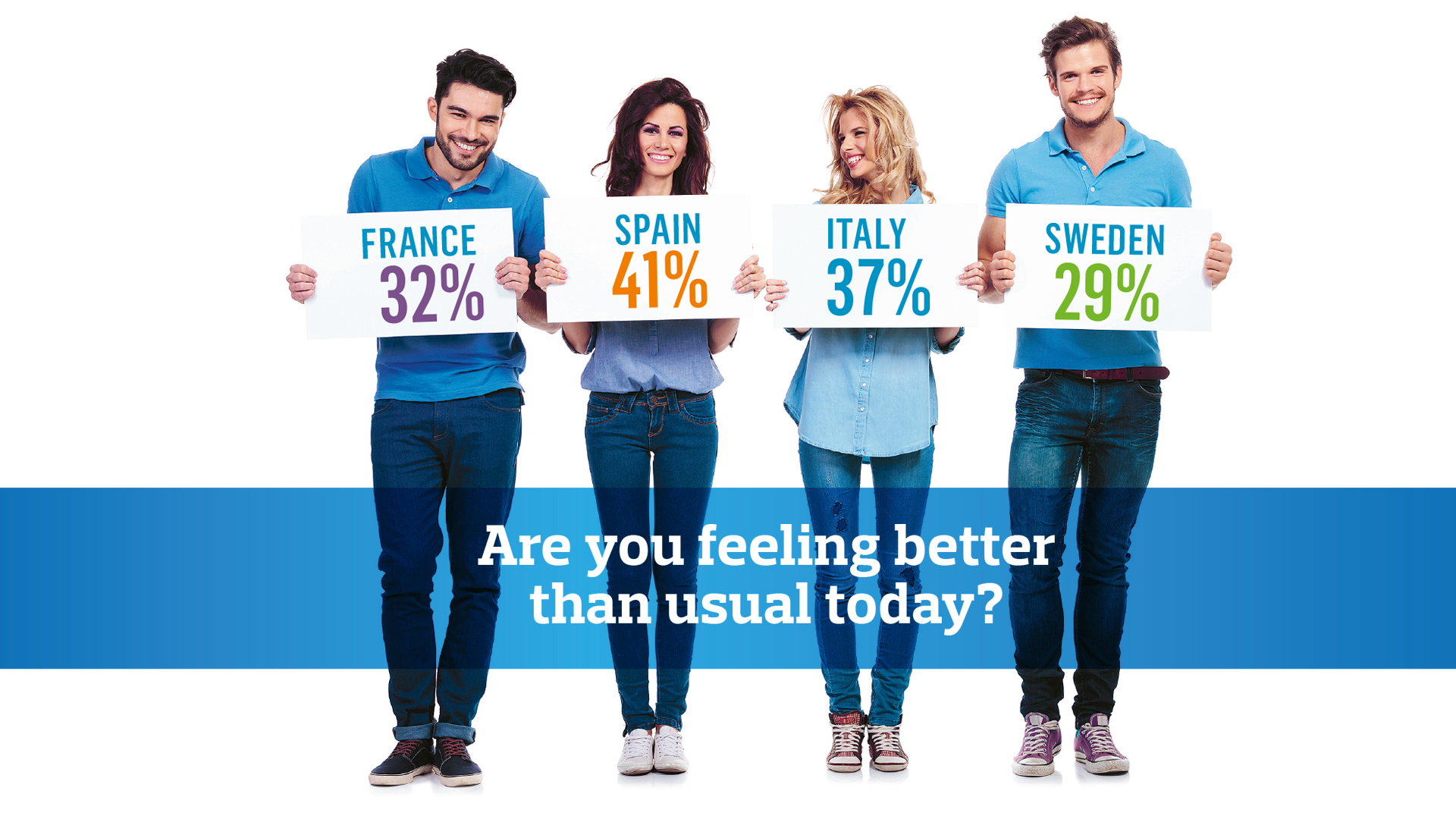
Future report insight story
What do digital habits look like in different European countries? This year’s Future Report Insight Story survey compares Sweden, Italy, France and Spain to find out. Looking further, the findings also tell us how global trends impact the world.
With the growing number of smartphone users and the burst of Internet of things (IoT) mobile phones have become a portal for an ever-growing list of digital activities.
When we look at our survey findings, regarding mobile behaviors, we can observe that users in Sweden, a digitally mature marked, use the smart phone in a more varied way than other surveyed countries.
READING NEWS ON THE PHONE
Most Swedes claim that they use their phone for reading the news, compared to less than half of the connected French. Social media is accessed by a majority of the connected Swedes on their phone, and less than half of the French.
The map function is used most frequent by Swedes and Italians and to a little extent by Spaniards and French. But it is changing fast. Our study suggests that Sweden is about two years ahead of the other surveyed countries.
Mobile payment continues to grow rapidly among customers in the developed world. Most of the connected Swedes have used the phone to pay, a lot thanks to the payment service Swish. Among Spaniards, Italians and the French less than half have used the mobile to pay for a service. Those who haven’t used the mobile to pay yet, in all countries but France, claim that they haven’t had the need, the French say that they don’t trust that it works.
When comparing countries like this, there’s a bigger question emerging – is digitalization bringing the world together, when we share information and millions of people watch the same TV shows, visit the same websites and laugh at the same jokes?
Not necessarily it turns out. Studies show the opposite result, that the change, in fact, is moving us all forward at the same speed, but as different groups. At the same time there is a movement towards more traditional values.
SMS RATHER THAN TALKING
Our survey also digs into consumption behaviors, confirming last year’s report, that the mobile is the device where all the trends come together. Increasingly, we prefer to communicate with our loved ones through messaging apps or sms, rather than talking. We buy stuff like trips, books and beauty products online. We expect to be able to access just about anything with a swipe.
THE AGE OF DIGITAL SNACKING
This means that we are now at the age of digital snacking. So, what does that do to our society, democracy, ethics and morality? What does that do for innovation and entrepreneurship? We are excited to share the study with you. Do let us know what you think!
Read the full report: Insight story
Virtual reality

Virtual reality
Gaming, sports, travel and entertainment are just a few industries exploring the possibilities of VR. Today several media giants are also experimenting at large scale. But will we all soon walk around with bulky headsets? And will we be able to cope with the intense experience of VR?
First Buzzfeed´s Ben Kreimer and his 360-video-camera-helmet went skydiving. Then they hit the floor of the Republican National Convention. The week after, the VR journalist was balancing on the roof of the Democratic National Convention, offering a virtual reality walk to anyone with a set of VR glasses. And on top of all that, he produced a well-received 360 piece from the the locker room of San Francisco´s baseball team, the Giants – that story got around six million views.
“Girls loved looking at the basketball players’ butts, we got a lot of comments about that,” says Ben Kreimer, smiling. Kreimer never paid any attention to the athletic butts of the team as he was filming the piece. “That´s the fun thing about this kind of content,” he says. “The audience will get something out of it that you never expected.”
Huge investments
2016 has been big for virtual reality. Tech giants have been investing huge amounts of money in VR devices, turning out one VR headset after another, each one fancier than the one before. As 2016 took off, the vision of Silicon Valley was loud and clear: Soon all of us will be strutting around with big, bulky headsets taped to our faces, living our virtual reality-lives full on.
But these expectations might have been a bit too lofty. Analysts have been fiercely debating just how quickly consumers will get into virtual reality, but there has been precious little data to inform the argument. The major players involved, including HTC, Facebook´s Oculus and Samsung, haven´t revealed official sales numbers of their VR-headsets, prompting some analysts to take a pessimistic view. For sure, a big group of gamers love the new technology – but what about consumers whose primary interest is news?
“Some argue that virtual reality is going to be a big thing for news organizations. I don´t agree,” says Joshua Benton, director of the Nieman Lab. The main argument for his bashing of VR in journalism is based on the way people interact with the news. News consumption is very ”lean back,” while interacting with VR takes effort, Benton asserts. “People consume news mainly to inform themselves,” he explains. “News should be quick to understand, easy to scan and simple to share. Today’s VR news meets none of these requirements.”
Ben Kraimer, the journalism technologist of Buzzfeed, agrees.
“Of course the hurdle is enormous,” he says. “Having to put something on your face instead of just pulling the Buzzfeed-app up on your phone is huge.”
Behaviors will change
He believes that the 360-content Buzzfeed is producing is mostly watched without VR headsets, and it’s designed to work this way. But things might change. As VR content across the board – in gaming, sports, travel, entertainment – will grow in volume, and as VR headsets become smaller, cheaper and easier to use.
“When you can use your VR headset for many different things, you´ll probably find it worth while to put it on for a couple of hours every night.” he says. “Maybe you are gaming for a while, then you switch over to watch the news or a movie in VR.”
Most big brands in news are experimenting with virtual reality journalism today, including The New York Times, The Guardian, The Economist, The Wall Street Journal and CNN. Some of them even have their own VR news app.
The discussion about the impact of VR experiences has been lively. During the game developer conference GDC in San Francisco this past March, Shuhei Yoshida, Playstation´s head of VR, warned about gaming and VR, even saying that virtual reality could be ”addictive”. He called for the gaming industry to be responsible as new games are developed.
“Some experiences are very intense.” he says. “I´m expecting some people to feel traumatised. There is an enormous power in this new medium.” News editors will have yet another parameter to consider with this new medium.
With 360 video cameras reporters can bring viewers into intense breaking news situations such as demonstrations, war zones and natural disasters. Which stories will be too much to cope with in virtual reality? And if a news organization decides to publish potentially controversial content, will it come with a warning?
“Let´s try things out,” says Buzfeed’s Kreimer. “Even if virtual reality journalism is not exploding in terms of hits right now, it pays to be a part of it. VR news is going…well, somewhere.”
A perfect match

A perfect match
Matching a brand’s expertise with a publisher’s storytelling and distribution has turned out to be a success. Content marketing fulfills publishers’ needs for new business models and is all about leveraging competitive advantages.
Since the New York Times in 2014 launched their in-house content marketing department T Brand Studios, publishers all over the world have followed in similar fashion: producing and distributing content on behalf of advertisers.
Commonly categorized as both native advertising and branded content, it sure has been subject to much debate in the media industry. Despite that, even the most conservative of publishers are jumping on the bandwagon.
Worldwide native advertising spend is expected to double – from 31 billion USD in 2015 to 59 billion in 2018, according to Adyoulike, a native advertising network. While native advertising as a whole does not solely include publishers’ content marketing efforts, it says a lot about the direction we are heading in.
A staggering result
For an advertiser to have a content strategy is perhaps as given as a management consultant’s powerpoint, including the word “synergy”. In Schibsted, publications were quick to launch branded content departments. One of VG’s first content marketing pieces was an article for movie distributor Nordisk Film, and their movie “The Wave”. The article quickly generated more than 300,000 page views, both from VG.no and viral traffic. Considering the population in Norway is 5,000,000, that number is quite staggering. While we don’t see numbers like that every day, they are not uniquely spectacular either.
Users visit online newspapers to be updated, informed, inspired or engaged – and do so by reading, watching and listening to content, in some form. Therefore, it should not come as a surprise to anyone that branded content click rates are outperforming those of display advertising.
What has been more surprising though, is how often branded content is head to head with editorial content. More often than not, VG’s branded content campaigns enter the top 20 list of most clicked content from the front page.
Accepted by users
Time spent on articles and completion rates on videos are comparable to editorial content. Articles shared from VG’s Facebook account usually gain the same amount of reach and engagement as expected from editorial posts, in some cases even more. There is no need to doubt whether the user accepts the branded content format. In the age of user experience, branded content clearly fits the bill.
Transparency has been the main talking point so far. It shouldn’t be. First of all, labeling the content should not be hard, at least not while we adapt a new format over time. Second, there are no incentives not to be transparent; in fact, the whole purpose for the advertiser is that the reader connects the content to the brand. Although fundamentally important, expect less talk about transparency as publishers improve their labeling standards and users become more used to branded content as a format.
A core competence
Seen from a publisher’s business perspective, branded content is basically all about leveraging competitive advantages.
Publishers are experts at storytelling, and at distributing content to their audiences. Branded content is a publisher doing what she is best at, but in another format. It is a business model that plays to your core competency.
For advertisers, building brand by telling stories makes sense too. A 2015 Boston Consulting Group study showed that 60 percent of Americans do not believe traditional advertising is based on facts. That makes alarm bells ring for any advertiser. How do you sell your products to an audience that do not trust you?
At the same time, 96 percent of the respondents said that their trust of a brand increases when a brand tells them something without trying to sell them something. If there is one thing that the content marketing trend has shown us, it is that brands too have every chance of telling great stories. Matching a brand’s expertise with a publisher’s storytelling and distribution is by all means a good combination.
As long as user experience remains uncompromised, with clear labeling and good content, branded content will continue growing. The users get more relevant ads. The advertisers get a great way of communicating with their audiences. And the publishers get a digital and profitable business model. Everybody wins.
6 pieces of advice to native advertisers
Choose a relevant destination and cooperate
When choosing where to distribute your message, make sure that it is where your audience is and that it is the right context for your brand. You also need to find out what type of content that works best in the context– everything from topics, language to length and structure. Successful campaigns are sprung out of successful collaborations between publisher and advertiser.
Dare to be customer-centric
Instead of thinking primarily about how your ad is going to drive sales, think about how this piece of content is going to meet the needs of your potential customers. What content can you provide that will interest, inform and provide value to your audience and leave them wanting more?
Dont talk about yourself
Don’t promote your company too much, but tell a story to achieve your goals. Native ads that have an inside-out perspective, or try to close a deal straight away, rarely works.
Be transparent
Make sure the users understand that it is an ad that they are clicking on and consuming. Taking shortcuts only lead to bad will for all parties involved.
Have patience
Native advertising is a long-term commitment and investment. It seldom pays off quickly. Campaigns are usually most effective at putting your brand top of mind, not driving immediate conversion, although there are exceptions.
Think like a reader
Last but not least – ask yourself if you would click on the content? Would you enjoy consuming it? And would you even share it with your friends? If you cannot say yes to at least two out of the three questions you still have work to do.
Josefine Kvarnström
Head of Schibsted Content Studio Sweden
My privacy is your business

My privacy is your business
Being transparent is vital when it comes to privacy in a data-driven age. Opening up for a dialogue with users presents a great opportunity to find new ways of telling the story about how and why data is used, says Ingvild Næss, Group Privacy Officer in Schibsted. In the end it will always be a question of trust.
As a user I want tailor-made services online. Like recommendations from Amazon and Netflix. Now I expect the same when consuming news and searching for jobs, apartments or cars. The same goes for ads. The more relevance, the better for me as a user – and for the advertisers. In order to personalize and give me tailor-made offers, companies need to know me. This means that companies need data about what I like, want and prefer. This calls for a discussion about privacy.
Throughout Europe we already have strict rules regarding the handling of personal data. With the new EU General Data Protection Regulation (GDPR), which will be a reality from May 2018, the requirements will be even more comprehensive. Also, the GDPR requirements will apply to all companies – including non-European companies, such as Facebook and Google – when handling data about European citizens.
A CHALLENGING TASK
The question is really not if, but how companies will manage to provide both personalized content and targeted ads, and at the same time make sure that I can feel comfortable that my right to privacy is respected.
Big data challenges the traditional approach to privacy. One of the basic privacy principles, which is also a part of the new GDPR regime, is data minimization. This is to ensure that only data which are strictly necessary for a defined purpose are collected and used.
Data minimization is difficult to apply in a setting where good results depend on rich enough data basis. One can actually argue that data minimization is not in my best interest as a user, and that there is a clear need to redefine the traditional privacy approach. What is in my best interest is not to limit my vendors´ source to knowledge about me; rather that the data picture my vendors have is as correct and complete as possible. Only then will my vendors be able to derive greater value in return. Privacy is more important than ever. The more data companies have, the more essential it is that I as a user am in control of my own data. The first step to ensure user empowerment is information and understanding. There is little doubt that today´s way of solving this with endlessly long privacy policies does not work. Instead, companies must communicate with me in a manner I understand, can digest and am engaged by.
AN AREA OF OPPORTUNITY
Privacy should even be looked upon as an area of opportunity to have a stimulating dialogue with users, which will be both in the users´ and in the companies’ interest. For instance, looking into how to tell each individual user the story about how the data is used and why, rather than having just a generic text about use of data.
Conducting extensive user research in order to learn and understand which possibilities there are to manage data that is valuable and make sense to users, is crucial. Just like user feedback is extremely important for the development of products and services, and offers a continuous dialogue with users to refine and improve the product offerings.
FROM ONE VENDOR TO ANOTHER
Designed to put users in the driver’s seat, the GDPR further establishes a right to data portability. This right will give me the possibility to manage my data as a single set of information across different platforms; I can choose to move from one vendor to another and bring my data with me. This can be a game changer.
An important trend that we see in parallel with user empowerment, relates to the adoption of privacy enhancing methods and technologies, like differential privacy. This is a privacy model that aims to limit the impact that each individual user´s contribution has on the outcome of an analysis. Basically, it is about using statistical analysis to abstract useful notions about what people do and prefer. The essential part from a privacy perspective is that the model prevents companies from extracting anything about me as a specific user. Thereby, I am also protected against use that may represent a privacy violation – including misuse by hackers, intelligence agencies and other parties to whom I do not want to give access to my data.
There are also a lot of other technologies available and being developed which are about protecting data, such as end-to-end encryption, access management and various forms of anonymization.
We are entering a new era of privacy. We cannot, and should not, fight the collection and use of personal data. Instead, we should find good privacy solutions to give users the best products and services; to empower users while protecting their data. As a user I will be much more willing to give a company valuable data about myself if I am engaged and feel trust.
Stay ahead in sales

Stay ahead in sales
What’s going on in the advertising business? These are the trends to watch, according to Schibsted’s ad and sales experts.
1. New tools for local advertising
Advertisers right now are very eager to manage their conversation funnel by reaching the right target group at the right time. This is getting possible by the prospect of local and hyperlocal advertising – geo-targeted ads that can be served to customers. A new tool, developed by Leboncoin and Schibsted Products & Technology, will allow precise targeting of adverts for hyper local groups, local groups, and a SEA (search engine advertising). This will be available for agencies and large advertisers. At present only very broad geo-targeting tools are available to advertisers, but new technologies and tools like this will soon be serving ever-more relevant ads to ever-more finely granulated groups of potential customers.
Fabien Scolan
Advertising Director Leboncoin
2. The Future of Quality Advertising is also about the user
Digital advertising has been under extreme development over the last years, not only in terms of targeting capabilities but also in ad sizes and amount of display banners on sites across the web. Banners heavy with data, intrusive takeovers and long pre-rolls on video clips have been introduced at the cost of user experience and with the rise of ad blocking software. Now we need to take care of the problem at its roots – only load ads when it´s absolutely necessary, minimize tracking and last but not least; adapt the ad-experience to the content on your site and the modus your audience is in.
Alexander Rydfjord
Commercial Head of Digital VG
3. What will Virtual Reality mean for advertising?
The first experience with the Oculus Rift VR glasses will knock you out of the chair. Literally. The question is how you as a brand will knock your customers out of their chairs. For brands, VR will be a tool to tell a powerful story that affects our emotions in a deep and profound way. Great content will engage users, whether it’s getting in the driver’s seat of the latest Volvo or furnishing your living room with Ikea products. As for publishers, they need to start generating great VR content for users to consume. In the same way users today accept watching a short pre-roll ad before an Aftonbladet TV clip, brands can serve VR experiences before or inbetween publishers VR content and thus publishers can start capitalizing on this new technology too.
Tomas Schultz
Business Strategist, Schibsted Sales & Inventory
4. How will The mobile continue to evolve?
Our mobile phone is the one thing we don´t leave home without, we always carry it with us wherever we go and whatever we do. For advertisers this brings an opportunity to be present with the consumer wherever they are physically. At the same time, when consuming media on mobile, advertisers have limited time to get users´ attention putting pressure on adaption to the mobile behavior. Research shows that mobile advertising has a reminding effect on the consumer, it drives purchase intent. The next step is to use this knowledge and place the mobile in the center of the media mix in order to maximize on the effects the platform enables.
Estelle Douglas
Business Strategist Mobile, Schibsted Sales & Inventory
5. The rise of the multi specialized generalist.
In a world that becomes more and more complex and when choices seem to be endless, the need for knowledge to be able to make the right choices, is high. Earlier the different roles in the media market had their set skills and competences. But now you need a broader understanding on the whole media market independently on where in the market you are. Ad agencies, media agencies or content providers – it is now highly likely that the most successful players have staff that is competent in fields that are beyond their main focus. Without it you will provide less quality in the work you deliver to your customers and the products you develop.
Sofia Nyctelius Krook
Director of Marketing & Competence, Schibsted Sales & Inventory
6. Marketing: Everything is new – nothing is new
The digital revolution creates new opportunities for advertisers to reach their audience with the help of data, targeting and programmatic ads. But at the same time nothing has changed. As a marketeer, you must still fill your brand with associations that differentiate you from competitors, and address three primary consumer needs: image, security and simplicity. Brand relations are not shaped in smartphones, but in our minds.This is good news for wise advertisers. By understanding customer needs and their media behavior, they can use new technology in the best way. The marketeers who are best at navigating in the landscape of brands, people and technology, will be the winners of tomorrow.
Joakim Claesson
VP Strategy and Sales Support, Schibsted Sales & Inventory
Reality is getting hacked

Reality is getting hacked
Cars have set the rules for city planning and our lives for ages. Some of us dream about that good-looking, easy-roaming luxurious ride, others just dread costs and traffic jams. Is this all about to change? The arrival of autonomous cars might be the start of a revolution. A carvolution.
On a lovely holiday afternoon, we were riding our Toyota to the summerhouse, two kids in the back two parents up front, when we stopped in traffic behind a Tesla Model X. Still a rare sight in Stockholm, Sweden, 2016, my wife blurted out: “Kids, look that’s an electric car!” “What’s electric?” the five-year old asked, temporarily looking up from her screen. The three-year old would not be bothered with something as irrelevant as a car, no matter the propulsion technology.
Mother again, happy to get the attention and opportunity to inject some real-world knowledge into the Youtube universe: “You charge its batteries to drive, just like your phone! You know, all cars will be electric in the future. No more gas.” “How long does it take to charge?” The five-year old again, cutting straight to the important stuff.
At this point I heard myself starting to speak Engineering, along the lines of how it depends on the power of the charger but maybe the battery pack can be exchanged like a cartridge and so forth. Before I could end the dad lecture coherently I was already starting to regret that I had undoubtedly exhausted my daughter’s attention span. But to my delight she asked dreamingly: “Hmmm, I wonder what kind of car I will buy when I grow up?”
“You won’t even have to drive yourself! It will be like a kind little robot, driving you around by itself! Isn’t that neat?” It was me again, overly excited and by now totally geeked out: “And maybe you won’t actually have to buy a car yourself? You will share it with others and just open up an app, tell it where you want to go, and a car will come pick you up. And isn’t that really cool that…” “Nooooo!” Ester’s anguished wailing from the backseat interrupted and surprised me. “I WANT to have my OWN car! I want to put my toys everywhere in it, and it’s going to charge my ipad, and play music, and maybe if the car is nice to me I will let it drive by itself. But I like to drive so it will only be sometimes.”
Too baffled to respond immediately I realized that Ester had just soundly punctured my utilitarian techno-dream with the clairvoyant backseat wisdom of a pre-schooler.
LONGING FOR A HORSE
In the early 1900’s one of my young grandfather’s most precious possessions was the family horse. Going from pure manpower to horsepower meant a revolution in efficiency and hence wealth for a family of farmers. The horse was also a primary mode of transportation, which meant that going to church and going to school was also feasible in the winter time on the one-horse sleigh. As grandpa grew up farming was of course gradually mechanized and cars replaced horses on the road. Grandfather was most probably the last generation of children longing for a horse – for practical reasons.
For my father’s generation, and myself, getting a car was very important. Looking back at my childhood 1970s and ’80s it seems as if everything happened in the car: family vacation, going to soccer games, the daily commute to work and school, and later on riding to parties with friends, drinking beer in the back seat and perhaps other things… such as singing Sweet Child O´Mine. Of course I wanted a car! I also remember spending silly amounts of time learning to drive. Three times I failed my driving test and boy was I proud when I passed. Still, I am most probably the last generation of children yearning for a car – for practical reasons.
I will be surprised if Ester ever has a car. Will she even learn how to drive? Will car brands be part of her life, like Chevrolet, Toyota and Volvo have been part of mine? Will she ever hunt endlessly for a parking space, run out of gas in the middle of nowhere, or be the night’s designated driver?
According to the WHO some 1.25 million people die annualy in car accidents, one every 25 seconds, many of which are caused by drivers under the influence. Despite knowing the immediate risks well, the lure of alcohol and the induced feeling of self control are so strong that ordinarily sane people keep committing acts of lethal insanity in staggering numbers. Autonomous cars will turn this situation on its head to the benefit of drivers, pedestrians and the alcohol industry. Instead of driving to where you want to have a drink, and stepping out, people will get into the car to have a drink. After work with friends – brought to you by the Absolut Bar Car.
NO NEED TO REST
Another key root cause for automotive accidents is exhaustion. Fatigued drivers make poor decisions, have lapses of attention at crucial moments or just flat out fall asleep behind the wheel. Driving a critical delivery through the night? No problem. Inexhaustible robo-drivers will bring profound change to the trucking and transportation industries. Lorries and articulated vehicles will haul at off-peak hours decreasing traffic, no longer restricted by truckers that need to rest.
But what about human judgment, certainly it cannot be replaced by an automaton? The first versions of autonomous vehicle software will be riddled with bugs, and some of them will cause lethal accidents. But compared to the human software ‘bugs’ of intoxication and weariness the autonomous driver will, on average, be an excellent chauffeur. Of course, there are complex issues of responsibility that will need to be handled differently. If a human driver disobeys traffic rules, thereby causing an accident, the punishment is normally quite lenient. As a society we have factored in the immense benefits of automotive transportation, and the fallible nature of humankind is known and accepted. Consider the same scenario with an autonomous vehicle incapacitating or even slaying a pedestrian, perhaps due to a software bug or a faulty sensor, perhaps due to the careless pedestrian. Can and should we be as understanding? Who is responsible, the owner or manufacturer? Can and should someone be sued for damages?
The technical challenge in creating an autonomous chauffeur that will not go D-Fens has until quite recently been unsurmountable. The standard paradigm of computing, amassing logical statements such as “IF child THEN brake” or “WHEN green light THEN accelerate”, would never have compounded into a self driving vehicle. But with the recent advancements in deep machine learning computers are now perfecting their driving skills on their own, learning with the patient guidance of human driving instructors.
HOW MUCH DATA IS NEEDED
But how will we know when a particular machine is ready to drive? Will they fail their driving tests a couple of times, like I did, and then finally pass and take off in a cloud of dust into traffic? As humans are tested by humans, learning computers are tested with data. How much data? Tesla CEO Elon Musk estimates around 250,000 laps around the world of driving data needs to be collected before regulatory approval. That is one epic driving test! As that data accumulates and transforms into safe driving skill it is my bet that humans will no longer be allowed to drive.
An entirely new category of accidents will emerge. A recent and heartbreaking example was a fatal car accident with a DVD player showing Harry Potter found in the wreck according to some eyeball witnesses. A tragedy, but nothing too strange one would think. Unless… the driver was alone in the wreck and the vehicle was a Tesla Model S commuting on autopilot.
A large share of car usage is related to the tedious, daily commute to work. And funnily enough most people decide to go roughly at the same time of day in the same direction. Today commuting is for most people an inefficient waste of life, but imagine instead going to work in a purpose made autonomous vehicle. Auto-commuting has the potential to be your most productive hour at work! Comfortable, connected, driven by an invisible driver.
In addition, autonomous vehicles will be able to reduce traffic through more efficient usage of road real estate. Owing to split second reactions and machine to machine communication with the vehicles nearby, cars could achieve simultaneous and synchronized starting at red lights, driving within inches of the car in front and seamlessly optimizing routes based on the current traffic situation. No more Falling Down when you are riding in the Mercedes F105 or the Volvo Concept 26.
Not only are today’s cars creeping forward for hours in slow traffic, they are actually standing still most of the time. A whopping 95 percent of the time. In stark contrast, self-driving cars will likely be driving most of the time, immediately picking up the next passenger after drop-off. As our car-defined cities have grown, parking inevitably became a nightmarish issue – for drivers, commuters and city planners. Despite the perennial lack of parking space, cities overall consist of 15-20 percent parking space. What will happen to all that prime real estate when no one needs parking? Green revolution or property crisis? And what about all those suburban garages? At first all that unused space will quite naturally fuel a startup boom, but over time garages will no longer be built. Why should they?
PEOPLE WILL COMMUTE LONGER
And what will happen to the car industry with all that efficiency being squeezed out of every shared vehicle? Sales will plummet and the industry must certainly be doomed! I would not short the market just yet. When the cost of car transportation will go down dramatically, demand will go dramatically up – economics 101. For example, more efficient and productive commuting will increase demand and acceptance for commutes, and hence people will commute longer.
As a car industry executive I would be less worried about volumes and more worried about the threatening irrelevance of car brands. The what?! Think about it, what will be your main transportation brand in the future? Probably Uber or one of its competitors. As vehicles zip around autonomously, and transportation becomes a service on demand, the brand of the hardware manufacturer will ultimately be less important.
Much like consumers of data could not care less whether their TCP/IP packets are transported by core routers from Cisco, Juniper or Huawei. Yes, there will be niches, and autonomous cars could still be symbols of status, but my guess is that the mass market will change profoundly. The game of musical partnerships chairs is already in full swing, with Volvo partnering with Uber, who also has Toyota as an investor. Lyft and General Motors are already in bed together. What is the future for car insurance brands? Car financing? Corner shop mechanics?
All in all, these changes make me a little sad. Or perhaps nostalgic. In 1994 I firmly believed a car equaled freedom, and I truly yearned for a car. It will seem pretty absurd in a decade or two with all the tire changes, car washes, parking hunting sessions, hours in slow moving traffic, and visits to the mechanic. My kids will think that owning a car is tantamount to a job. Who needs an extra job?! Chances are that owning a car will be their ultimate luxury.
Cars have enormous societal impact – for good and for bad. A revolution in cars will undoubtedly be a revolution in society. A carvolution. Chinese search engine Baidu, Volvo, Google, Nissan and Mercedes-Benz have all promised autonomous vehicles generally available by 2020. On August 16 2016 The Ford Motor Company announced that by 2021 it will offer autonomous vehicles on demand – one century after the production of the iconic model T surpassed 1 million units per year.



